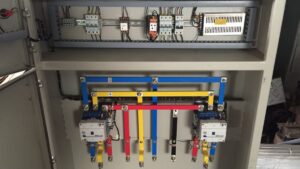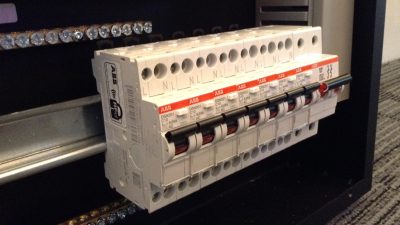

Most distribution boards are versatile in nature. They can be bought as unfilled nooks, a prepared-to-utilize wired standard unit, or something uncommonly made dependent on the client’s electrical prerequisite. The best part about an electrical dispersion board.
You can have it for independent pieces of your structure, insofar as each board is constrained by a switch disconnector. For example, the pool territory could have an alternate appropriation board, while the water system office at your farmhouse could work on another dissemination board.
The structural and technical aspects of an electrical distribution board vary, depending on the country and the electrical requirements. A typical electrical distribution board includes the following components, bus bar, fuse links, switches, bypass equipment, and residual current detector (RSD). In today’s world, safety is of the utmost importance when it comes to working with wires and cables at home. Distribution boards must ensure the following:
The fuse shouldn’t allow overcurrent through the circuitry.
It should have sufficient space for other wires, fixtures, and cables, in addition to it being easy to install as long as it is not close to any water splashes.
It shouldn’t be susceptible to corrosion and should be kept away from fire, particularly in spaces where food is cooked. Follow foolproof ways to ensure that your wiring and cables are of the best quality.
An electrical distribution board (or panel board) is a component of an electricity supply system that divides an electrical power feed into subsidiary circuits, while providing a protective fuse or circuit breaker for each circuit, in a common enclosure. Normally, the main switch, and in recent boards, one or more Residual-current devices or Residual Current Breakers with Overcurrent protection will also be incorporated.
Electrical distribution board wiring is sometimes known as breaker panels fuse box, fuse board, circuit breaker panel, consumer unit, or CU, panel board The branch distribution boards are used for further distribution of supply to various sub-circuits. These are also provided with fuses at the commencement of the subcircuit.
You must have to install the feeder pipe at first.
• Install the connector into the panel
• If you’re using a metal pipe, place a plastic bushing over the connector threads.
• Level the panel and insert screws through the holes provided in the back of the panel
• Using tape, pull the electrical feeder wires through the feeder pipe.
• Leave enough wire to get to the opposite side of the panel.
• Bend the two black wires to shape them for easy installation to the main breaker.
• Excess bare wire leaves a safety hazard where the wires can come in contact with other wires and cause a short circuit.
• Connect the neutral wire to the neutral bus. The neutral bus is located on either side of the breakers. It is a silver-colored bar with many smaller screws and connection points
• Connect all of the green and bare copper wires to the ground bus bar.
• If you bend the wires ahead of time, you’ll have a nice, neat wire installation that looks uniform.
• Next, install the circuit feeds to the branch circuit breakers.
• Connect the appropriately sized wire to the correctly rated breaker. Bend the wires so that they keep a neat appearance when the installation is complete.
An iron-clad enclosed pattern main switch is installed on the mainboard. The mainboard should be installed as near to the service board as possible and also near to the commencement of supply.
The height of the main switchboard should be so as to facilitate its operation for isolating the supply to the building by the consumer.
The normal height from ground level should be 1.5 meters. Seasoned teak wood or other durable wood with solid back impregnated with varnish of approved quality is used.
All joints of the board should be dovetailed. The main switchboard which contains relevant circuit breakers should be concealed in the wall thickness in flush with the surface of the wall.
The service board or energy meter board and mainboard close to each other and the box where the two boards are installed should be provided with a shutter having a glass window for meter reading and general inspection.
Curabitur ac leo nunc vestibulum.

Our company “Premier Engineering & Services” is committed to fulfill both statutory and regulatory requirements and quality requirements of customer. To meet this obligation, the company will continue reviewing the system for its continued suitability of the quality management system. The policy will be communicated, implemented and maintained at all levels of the organization. Appropriate resources of the company will be directed towards achieving the quality goals through employee’s participation.

Our company “Premier Engineering & Services” is committed to fulfill both statutory and regulatory requirements and quality requirements of customer. To meet this obligation, the company will continue reviewing the system for its continued suitability of the quality management system. The policy will be communicated, implemented and maintained at all levels of the organization. Appropriate resources of the company will be directed towards achieving the quality goals through employee’s participation.